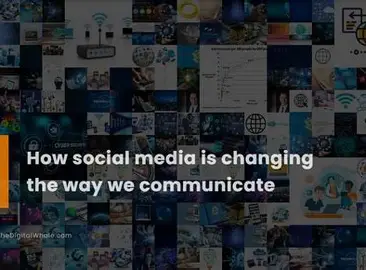Herein this article, we discussed how social media is changing the way we relate, staying connected across distances, the rise of the “highlight reel”, communication is faster but shallower, new forms of community and belonging, blurred boundaries between public and private.
What began as a way to connect with friends online has grown into a global network that influences everything from our personal relationships to how we see the world.
But while social media has brought people closer in many ways, it’s also reshaping how we relate sometimes for better, sometimes for worse.
Staying Connected Across Distances
One of the most obvious benefits of social media is how it shrinks the world. Whether you’re keeping up with a childhood friend halfway across the globe or sharing family milestones in real time, platforms like Instagram, Facebook, and WhatsApp make it easy to stay in touch.
This constant connection helps maintain bonds that might otherwise fade with time and distance. Social media allows for low-effort, ongoing contact — a quick “like” or comment can go a long way in maintaining a sense of presence in someone’s life.
The Rise of the “Highlight Reel”
On the flip side, social media can create unrealistic expectations. Many people only share the best moments — vacations, promotions, smiling selfies — turning their feeds into polished highlight reels. While there’s nothing wrong with celebrating the good, constantly comparing our everyday struggles to someone else’s best moments can leave us feeling inadequate or disconnected.
This phenomenon can shift how we relate, pushing us to present a curated version of ourselves instead of being authentic. Real vulnerability, which is key to deep relationships, can become harder to find.
Communication Is Faster but Shallower
We’re more connected than ever, yet many people report feeling lonelier. Part of the reason? Our interactions have become faster and more frequent — but often less meaningful.
Liking a post or sending a quick emoji can’t replace a heartfelt conversation. Social media encourages bite-sized interactions, which, while convenient, might leave us craving deeper connection. The challenge is to balance the instant gratification of digital chats with the depth that comes from real conversations.
New Forms of Community and Belonging
At its best, social media can help people find their tribe. Whether it’s a support group for new parents, a niche hobby community, or a space for people with shared identities or struggles, social platforms have made it easier than ever to find like-minded individuals.
For those who may feel isolated in their offline lives, these online communities can be a lifeline — offering validation, support, and a sense of belonging that might be hard to come by elsewhere.
Blurred Boundaries Between Public and Private
Finally, social media has changed what we consider private. Sharing personal moments — engagements, grief, health updates — has become part of how we connect. But this blurring of public and private life raises questions: How much is too much? Are we sharing because we want connection, or because we want attention?
Navigating these boundaries is a new social skill we’re all still learning.
Social media is neither good nor bad — it’s a tool. And like any tool, its impact depends on how we use it. When used mindfully, it can strengthen relationships, foster understanding, and connect us in powerful ways. But it also requires self-awareness and intentionality to avoid shallow connections, comparison traps, and digital fatigue.
As we continue to adapt to this evolving landscape, the key may be to prioritize realness over perfection and quality over quantity in our online interaction.


